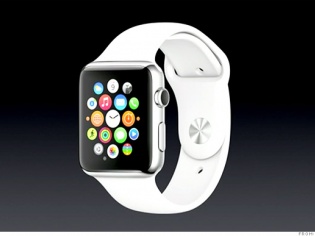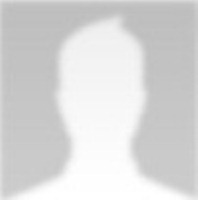-
Aravind
10th Sep 2014
The more you hide something the more curiosity it creates. This was true when it came to the Apple Watch, which was expected to be called iWatch, and Apple was been able to keep the information about its wearable watertight and away from the prying eyes of the leakers, as rumors point until its release on Tuesday.
Apple has been successful in creating curiosity around its products and revealing only what it wants. We had seen it with the iPhones and now they managed to achieve it with the wearable, whose design was kept under the wraps until the last minute.
Now that the Apple Watch has been launched let us trace its journey.
Timeline
- The first rumors appeared in December 2012, when a report claimed that the company was working with Intel on a Bluetooth-enabled watch. It was expected to come with a 1.5-inch OLED display and was planned to be launched in the first half of 2013.
- This emerged as Apple filed patent in Jamaica in December 2012 and the news gathered pace as Apple went on a patent filing spree to protect the name. In June it filed for iWatch trademark in Russia and later in Japan. It is also doubted that it had filed for trademarks under a shell company called Brightflash USA LLC in other countries like the United States, Australia, United Kingdom, Denmark and Macau amongst a host of other nation.
- The New York Times in February 2013 reported that Apple was working on a smartwatch with curved glass materials and was running on iOS.
- This was following an Apple patent application for a ‘bracelet’ accessory with a wraparound display covering the entire outer surface of the device, but the word watch was not used. A second patent for a wrist worn smart wristband called the "iTime" surfaced in July 2014.
- Off late, Apple has extended its "Apple" trademark in countries like Ecuador, Mexico, Norway, and the United Kingdom to cover jewelry and watches.
- While everyone was expecting the iWatch to be released in one size, in June the reports from Reuters and The Wall Street Journal pointed towards a device with multiple sizes of 1.3 and 1.7 inches. The latest rumors from the production lines in Asia suggest one model with 1.6 inch and two with 1.8 inches.
The Design
- Apple is known to thrive for perfection and with the iWatch they might successfully bring together the smart and the art. While the number of designers are still not officially confirmed, it is rumored there are around 100 people working on the iWatch.
- Let us look at some of their recruits which may hide hints about what the product is going to look like.
- Paul Deneve, former CEO of French luxury label Yves Saint Laurent, was one of the first hiring for the ‘special projects or iWatch’ and has a fashion background.
- Apple’s emphasize on a health gadget was clear when they hired from companies involved in biometrics and health sensors. According to 9to5Mac, the iWatch team is headed by Senior Vice President of Technologies Bob Mansfield, Kevin Lynch, and James Foster, with other teams contributing as needed.
- In 2013, Apple hired Nancy Dougherty, formerly at Sano Intelligence, worked on designing a device to measure blood chemistry through microneedles and Ravi Narasimhan, formerly worked at biosensor technology firm Vital Connect. Narasimhan had served as a vice president of research and development, responsible for ‘biosensor technology and algorithms for remote physiological monitoring with wearable medical devices.’
- It also hired Michael O'Reilly, M.D., the former Chief Medical Officer and EVP of Medical Affairs at Masimo Corporation, a company that specialized in pulse oximetry, and Roy J.E.M Raymann, a sleep expert from Philips Research. Raymann was involved in several sleep-related research products studying sleep and activity monitoring, so we know what Apple was looking at.
- Another hiring in the form of Marcelo Lamego, who has worked on sensor-based medical technologies like those used in the Pronto-7, a non-invasive, portable device that measures hemoglobin, oxygen saturation and pulse rate at Cercacor.
- The first indication of smartwatch rather than only a health device came when they hired former sales director of TAG Heuer, Patrick Pruniaux, former sales director for luxury watch brand TAG Heuer. In June they hired of two new engineers from Nike's former FuelBand hardware division.
Unlike most of its competitors, Apple never believes in rushing into the market with a half-baked project and the same is true about the Apple Watch.
Apple Watch's Timeline: Everything You Wanted To Know | TechTree.com
Apple Watch's Timeline: Everything You Wanted To Know
Tracing the history of one of the most anticipated products to come from Apple's stable
News Corner
- DRIFE Begins Operations in Namma Bengaluru
- Sevenaire launches ‘NEPTUNE’ – 24W Portable Speaker with RGB LED Lights
- Inbase launches ‘Urban Q1 Pro’ TWS Earbuds with Smart Touch control in India
- Airtel announces Rs 6000 cashback on purchase of smartphones from leading brands
- 78% of Indians are saving to spend during the festive season and 72% will splurge on gadgets & electronics
- 5 Tips For Buying A TV This Festive Season
- Facebook launches its largest creator education program in India
- 5 educational tech toys for young and aspiring engineers
- Mid-range smartphones emerge as customer favourites this festive season, reveals Amazon survey
- COLORFUL Launches Onebot M24A1 AIO PC for Professionals







TECHTREE